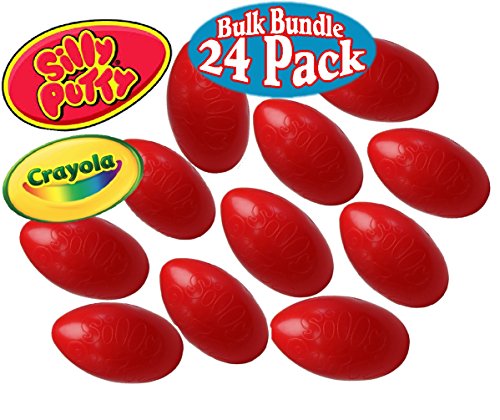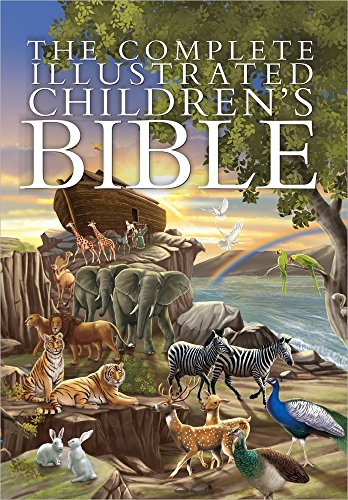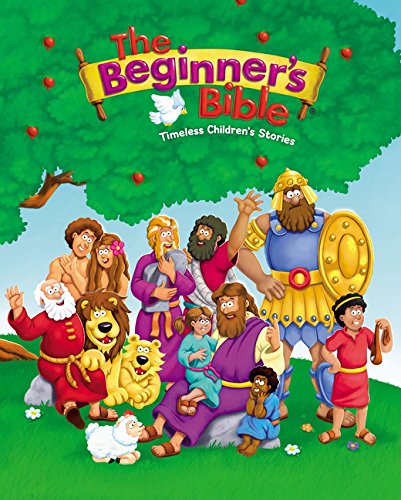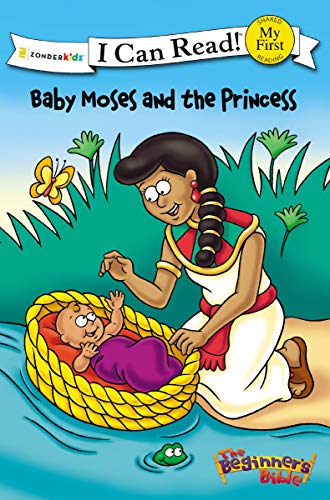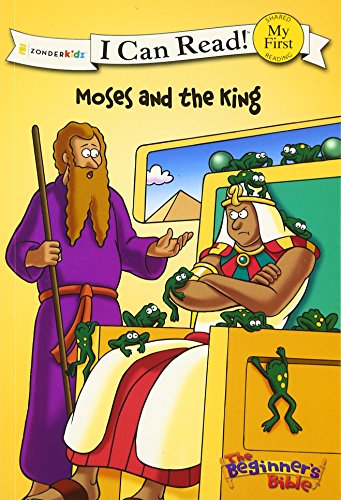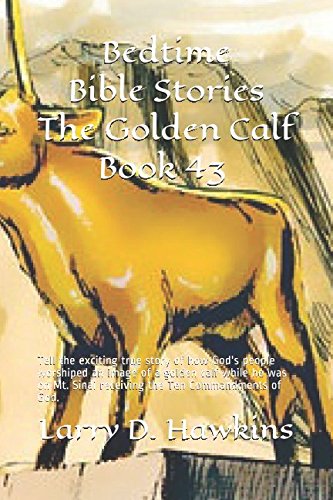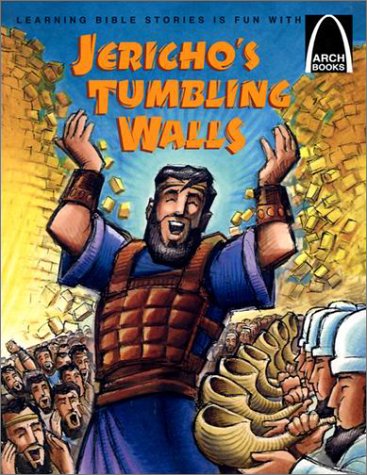Children's Sermons about the Exodus
Updated
Greetings, you who are highly favored! Here's my new collection of children's sermons about the Exodus. Most of them show how the stories of the Exodus point us to Jesus in some way. Use these children's sermons during your teaching on the Exodus itself or save them for an Advent series leading up to Christmas. If you've studied the Exodus, this collection would be a great reminder as you show how it ties into the core of the New Testament.
In this collection, you'll find:
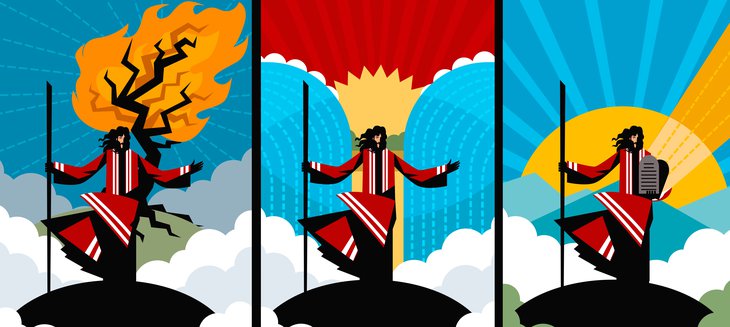
- Saved for a Purpose – God saved Moses and He saves us; now what?
- Saved from Our Mistakes – Even after Moses sinned, God still used him
- Saved by the Blood of the Lamb – We're saved Jesus' blood, our Passover lamb
- Saved to Save – What Jesus saves us from
- Manna and the Bread of Life – Jesus is the daily bread for our souls
- The Giving of the Ten Commandments – All Scripture is directly from God
- The Golden Calf – We need to stay faithful to God even when others don't
- What They Did at the First Church – Jesus is our once for all sacrifice
- Lifting Up the Snake – Jesus is who we look to for our salvation
- God and the Walls of Jericho – We can trust God's instructions even when they seem strange
Precede or follow these children's sermons in your Sunday School or Children's Church time with a lesson series on Moses and the Exodus. The five-collection series starts with Preparing for the Exodus and continues with the Exodus , 40 Years in the Desert , Building the Nation , Entering the Promised Land .
You might also want to follow or break up these children's sermons with a children's sermon series on the Ten Commandments .
Recommended Extras
These story books, products, and alternative children's sermons aren't necessary, but they will add to your teaching should you choose to use them.
Paid Resources
Fairly inexpensive.
The following are some recommended children's Bibles, storybooks, and props you can use for your children's sermons. The illustrated Bible paraphrases and story books are useful for when you want to give kids a visual to look at while you tell the Biblical story. It helps to keep younger kids' focus a little better as well as giving your entire audience an idea of what the Biblical setting was like.
This first book is an impressive, inexpensive volume from Janice Emmerson. The artwork is realistic and the storytelling accurate to the Biblical narrative. Emmerson does a great job of hitting the main points of the story while keeping her stories bite-sized for little ears or short children's sermon time spans.
Perhaps the best aspect of this and the following children's Bible is that you can use the week after week. They both feature almost every story you'd want to present, so keep them on your shelf or in your supply bag and know that you've got at least one based covered for any children's sermon you want to give.
This children's Bible and a couple of the story books below are from The Beginner's Bible series. I always recommend this book as an alternative to the first if you have a younger audience. The art is cartoonier, which makes the experience more fun for younger kids, and it still does a great job of showing the Biblical setting. In fact, the stories themselves are more detailed than the first option, so if you want a book that tells more of the story without being a dedicated story book for that passage, this is a great middle ground. And, again, you can use it week after week as you move through the Bible.
This story book is the perfect alternative to simply telling the story when talking about the birth of Moses. I have two children's sermons below in which you could use this, Saved for a Purpose and Saved to Save. When you're finished with your children's sermon, put the book in the church library or in the Sunday School area for kids to reread it.
The follow-up, of course, is this volume. You can use it in the Saved by the Blood of the Lamb children's sermon below. I recommend using it if you have a little more time and can go into more detail about the plagues and Moses' dealing with Pharaoh.
For use in The Golden Calf children's sermon. This is the best book I've found for telling the story of the golden calf. I also enjoy the classic, realistic art style Hawkins uses. My children's sermon doesn't focus as much on the golden calf as it does on the Levite's decision, but if you want to go into more detail about the story, this is a good volume to use.
From the Arch Books series, this is a fun book with a colorful art style telling the story of the fall of Jericho. Read the story to the kids before acting out the motions in the children's sermon below. Kids will enjoy the anticipation, knowing what they're working toward as they march around.
Free Resources
This is a simple demonstration from Sermons4Kids using pepper and dish detergent to show how God parted the Red Sea . Use it in the Saved to Save children's sermon below or as its own children's sermon.
Saved for a Purpose Children's Sermon
Purpose: Use this children's sermon about the birth of Moses to help kids think about the purpose God has for them.
Scripture: Exodus 1:22-2:10
Needed: something that might have been thrown away or something that's been recycled, such as an item you picked up from a thrift store or a garage sale, or some reclaimed material that you're using for a new purpose, or even a pet you rescued as a stray or from an animal shelter (you can use pictures of your pet if you don't want to bring it into church)
Children's Sermon: Show the children your object. Explain that someone was going to throw it away, but you saved it. Tell students why you saved it and what you're using it for.
That reminds me of the story of how Moses was born.
(Summarize Exodus 1:22-2:10 with the following story.)
When Moses was born, his people, the Israelites, were slaves of Pharaoh, the king of Egypt. But Pharaoh was afraid that the Israelites might take over his country one day, so he ordered that all the baby boy Israelites be killed. He ordered that their mothers throw them in the river and let them drown.
Pharaoh was a very wicked king. But God gave Moses' mom a great idea. Instead of putting Moses in the river to drown, she put him in a basket by the river.
Then, when the princess, Pharaoh's daughter, came to take a bath in the river, she saw baby Moses in the basket. She felt bad for him and took him to be her own son.
Later, Moses grew up and God used him to lead all of the Israelites out of Egypt. Moses was the one God used to free the Israelites from their slavery.
And, you know, God has saved us too. He hasn't saved us from drowning in a river, but He has saved from our sin, the wrong things that we do.
God's rule is that when we sin, we should die and go to Hell as a punishment. But He sent Jesus to die on the cross and save us. Jesus died and went to Hell for three days as a punishment for all of us.
Now, why do you think God would save us like that?
God sent Jesus to save us because He loves us.
God saved Moses from drowning in the river because He loved Moses. But, then, God had a job for Moses to do, didn't He? He sent Moses to free the Israelites from slavery.
What I want you to think about this week is this; now that God has saved you from your sins, what does He want you to do? Moses' job was to free people from slavery. What's the job God wants you to do?
Closing Prayer: Loving God, we thank You for saving us, just like You saved baby Moses. Help us to know what job You have for each one of us. In Jesus' name we pray, amen.
Saved from Our Mistakes Children's Sermon
Purpose: Use this children's sermon about God talking to Moses from out of the burning bush to show them that God forgives us for our mistakes.
Scripture: Exodus 2:11-4:17
Needed: something that was broken that you fixed or a pet or a picture of a pet that made a mistake but you forgave
Children's Sermon: If your object is an item, describe what it is and how it broke. Ask students what you should do with it. Then, show them your object and explain that instead of throwing it away, you fixed it. You made it so that you could use it again.
If your object is a pet, describe what your pet did that was wrong. Ask students what you should do with a pet that does such a thing. Then, show them your pet or a picture of your pet and explain that instead of getting rid of your pet, you forgave it.
This reminds me of another time in the life of Moses.
(Summarize Exodus 2:11-4:17 with the following story.)
We talked about how God saved baby Moses, and that instead of drowning in the river, the princess of Egypt took baby Moses to be her own son.
When Moses grew up, he felt bad that his fellow Israelites were slaves. One day, he saw an Egyptian slave master beating an Israelite slave. It made Moses so angry that he killed the Egyptian slave master.
Do you think Moses should have killed the Egyptian slave master?
Moses made a mistake. He let his anger get out of control and he did something he shouldn't have done. When Pharaoh, the king of Egypt, heard about it, he was going to have Moses arrested and put to death as a punishment.
So, Moses ran away to another country. While he was there, he got married and had two sons. He was working as a shepherd when he saw something strange. There was a bush on fire.
What do you think would happen to a bush that caught on fire?
A bush that catches on fire is supposed to burn up until there's nothing left but ashes. The strange thing is that this bush wasn't burning up. It was on fire, but the fire wasn't hurting it.
So, Moses walked up to the bush to look at it. Then, from out of the bush, God talked to Moses. God told Moses that He wanted him to go back to Egypt and free the Israelite slaves.
Why do you think God would choose Moses for such an important job when Moses was the one who made such a big mistake when he lost his temper and killed the Egyptian slave master?
God chose Moses because He had forgiven Moses for the mistake he made.
God forgives all of us for the mistakes we make too. And God still wants to use us. Just like I (fixed my _ so I could still use it / forgave my pet when it _.)
God can forgive all of our mistakes and still use us to do great things for Him.
Closing Prayer: Father God, we thank You for forgiving us when we make mistakes. We know that You love us no matter what we do. Help us to remember that You still have big plans for us no matter what mistakes we made in the past. In Jesus' name we pray, amen.
Saved by the Blood of the Lamb Children's Sermon
Purpose: Use this children's sermon on the Passover to teach kids about how God saved the Israelites and how He saves us.
Scripture: Exodus 4:18-14:31
Needed: Items that you want to sort through to keep or get rid of, stickers or some way of marking what you want to keep
Children's Sermon: Show children your collection of items. Explain that you're going to throw some away, but you might want to keep the others. You'll take their help in deciding which to keep. You can show them each item and let them vote whether to keep it or get rid of it. Those that they want to keep, you'll mark with a sticker or by some other visible sign. When you're finished sorting your items, remind the students that the ones you marked are those you're going to keep.
Say, Sorting and marking those items reminds me of a Bible story.
(Summarize Exodus 4:18-14:31 with the following story.)
After God spoke to Moses out of the bush that was on fire, but didn't burn up, He sent Moses back to Egypt to free the Israelites from slavery.
But when he got to Egypt, the wicked king Pharaoh said that he didn't believe in God and that he wouldn't let his slaves, the Israelites, go. He said he needed them to work!
So, God punished Pharaoh and the Egyptians. First, he used Moses to turn all the water in Egypt into blood. Then, God made millions of frogs come bother the Egyptians. Next, God made millions of flies come.
Then, God made all the Egyptians' cows and other farm animals die as a punishment to them. Then, he made them all get sores on their body that itched and hurt.
Next, God made hail fall from the sky to destroy all the Egyptians' farm crops. Then, He made it totally dark everywhere in Egypt except where the Israelite slaves lived.
God did all these thing to the Egyptians because they wouldn't listen to Him and let the Israelites go out of slavery. Every time God punished the Egyptians, Pharaoh said he was sorry. He promised to let the Israelites go, but he never did. He always changed his mind.
So, finally, God brought the greatest punishment on the Egyptians. First, he told the Israelites to all kill and eat a lamb for dinner. They were to take some of the lamb's blood and put it on the doorframe of their houses.
That night, God sent an angel through Egypt. The angel went into every house that didn't have the blood of a lamb on the doorframe and killed the oldest child he found there. He even killed the oldest child of Pharaoh himself.
The Israelites were saved because they had the blood of the lamb on their doorframes. The blood marked them as safe, just like we marked the items that we want to keep. The Israelites called that night Passover because the angel passed over their houses.
And we know that we're also saved from God's punishments by the blood of a lamb. The Bible calls Jesus the Lamb of God, and He was killed thousands of years later on the same day that the Israelites celebrate Passover.
Jesus died on the cross to take the punishment for all the wrong things we do. And now, if we believe in Him, His blood, the blood of the Lamb of God, saves us from God's punishments. It marks our hearts so that God doesn't have to punish us because He already punished Jesus in our place. We're saved by His blood just like the Israelites were saved by the blood of a lamb.
Closing Prayer: Jesus, we thank You for coming to die for us, to take our punishment for us. Help us to believe in You and to trust in You our whole lives. Amen.
Saved to Save Children's Sermon
Purpose: Use this children's sermon on the life of Moses to show kids how he points to Jesus.
Scripture: Exodus 1:22-2:10
Needed: two things that are the same but different sizes, such as two screwdrivers or wrenches, two pots, two glasses, etc.
Children's Sermon: Show the children the smaller of your two objects. Tell them a story about how you were using the smaller object very successfully for one task, but it isn't large enough for your next task. Maybe your small wrench is too small to fit around a large nut, or your small pot is too small to cook for a large group of people coming over.
Ask, What should I do if my _ is too small? (Listen to kids' answers. When they say that you should get a larger item, pull out the larger version.)
That's a great idea! With a larger _, I'll be able to _.
That kind of reminds me of two people God used in the Bible to accomplish His tasks. He used one for a pretty big task, but then, God used the other one for something even greater.
The first person I'm talking about whom God used is Moses. How many of you have heard of Moses?
Moses was born in the land of Egypt, where his people were slaves to Pharaoh the king. But Pharaoh was afraid that Moses' people, the Israelites, would grow up to break free of their slavery and take over the country.
So, – now, this is a very sad part, so get ready – Pharaoh said that any Israelite mothers who gave birth to baby boys had to drown their baby boys in the river. That's horrible, isn't it? God doesn't want any babies to die.
So, when Moses was born, his mother hid him by the river instead of drowning him in the river. She put him in a little basket. And do you know what happened?
When Pharaoh the king's daughter, the princess of Egypt, came to take a bath in the river, she saw baby Moses in the basket. And instead of drowning him, she took Moses to be her own son.
Later, when Moses grew up, God used him to lead the Israelites out of slavery in Egypt. When the people got to the edge of the land of Egypt, God used Moses to lead the people through the Red Sea by making the water of the sea split apart so that the Israelites could walk through it out of Egypt.
Moses was like the little _ I used. God used Moses to bring the Israelites out of slavery, but God's next task was even bigger than that.
The person God used to accomplish this bigger task was Jesus. Like Moses, Jesus was born in a time when the people of Israel were being ruled over by a wicked king named Herod.
And when Herod heard that Jesus had been born, he told the people of Jesus' town to kill all their baby boys. Herod was afraid that Jesus would grow up to be king instead of him, just like the Pharaoh was afraid the Israelites would take over his country.
But God told Jesus' parents, Mary and Joseph, to take the baby Jesus and run away. Later, when Jesus grew up, God used Him to free everyone not from the power of the wicked king, but from the power of being slaves to sin.
Did you know that we're all slaves to sin? We all do wrong things sometimes. But Jesus came to free us from the power of sin. If we believe in Him, He can give us the power to do the right things and not do the wrong things.
God used Jesus to save us from our sins by letting Jesus die on the cross. Jesus was punished for all the wrongs that we do, so that God doesn't have to punish us.
So, God saved Moses so that He could use Moses to save the Israelites from slavery. He saved Jesus so that Jesus could save us from being slaves to sin.
Closing Prayer: Father, we thank You for saving the Israelites from slavery. But we thank You even more for saving us from being slaves to sin. When we think about Moses and the Exodus, help us to remember Jesus.
Manna and the Bread of Life Children's Sermon
Purpose: Use this children's sermon about the manna God gave the Israelites to teach kids about Jesus, the bread of life, that He gives to all of us.
Scripture: Exodus 15:22-16:36
Needed: enough bread for every child to have a piece
Children's Sermon: Give each child a small piece of bread and tell them to hold it while you tell them a story about bread from the Bible
(Summarize Exodus 15:22-16:36 with the following story.)
After God freed the Israelites from slavery in Egypt, they crossed through the middle of the Red Sea into the desert. And, of course, they got hungry. They had escaped Egypt, but they hadn't brought very much food with them. And they couldn't grow crops in the desert.
So, what do you think they did?
They complained. They complained against Moses and against God. They even said that they wished they were still back in Egypt so at least they would have some food!
So, do you know what God did? He gave them bread. The next morning, when the Israelites woke up, there was bread all over the ground! And it was the best bread they had ever tasted. It was light and fluffy and it tasted like it had a little bit of honey mixed into it to make it taste sweet.
The people ate the bread all day and were very happy. But will bread fill a person up forever? Or will they get hungry again?
God knew that the people couldn't eat bread for just that one day. Every morning, he gave them new bread. And that's how the Israelites lived in the desert. God gave them new bread every day.
But the Bible also calls Jesus bread. It calls Him the Bread of Life. Do you know why?
Because just like the Israelites needed bread every day to survive in the desert, our souls need Jesus every day. Every day, we need to think about Jesus and pray to Him, and read our Bibles to learn about Him. When we do that, we're taking Jesus into our souls, just like the Israelites took the bread into their bodies.
Everyone, take a bite of your bread and imagine that you're taking Jesus into your souls.
Closing Prayer: Jesus, we thank You for coming into our souls. We thank You for being a part of our life. We pray that You'll help us to take time to pray and think about You every day so that every day, You can feed our souls with Your love.
The Giving of the Ten Commandments Children's Sermon
Purpose: Use this children's sermon about God giving Moses the Ten Commandments to teach kids how all of Scripture is directly inspired by the Lord.
Scripture: Exodus 19-31
Needed: a notebook and something to write with
Children's Sermon: (Summarize Exodus 19-31 with the following story.)
Say, After God used Moses to bring the Israelites out of slavery in Egypt, God needed to give the Israelites His rules for how they should live. They were going to become a new country, so God had to give them the laws they were supposed to obey.
So, God called Moses to come up a mountain and talk with Him. Moses went up on the mountain and talked with God for 40 days. That's a long time, isn't it? But God had a lot to tell Moses.
And while Moses was up on the mountain, God carved His ten most important rules on two stone tablets and gave them to Moses. When Moses came back down from the mountain, He gave them to the people.
Now, I want show you how this worked. I'm going to write something down. Pretend that I'm God writing the Ten Commandments. (Write a rule from your children's ministry or a common rule for your church onto a piece of paper.)
Now, I need a volunteer. (Give the piece of paper to your volunteer.) _ is going to give the rest of you the rule I wrote down. _ is like Moses carrying the Ten Commandments and giving it to the people.
Is the rule _'s rule?
It's not _'s rule. _ is the one who gave you the rule, but I'm the one who wrote it, so it's my rule. And even though Moses was the one who gave the people the rules they were supposed to follow, they weren't Moses' rules; they were God's rules.
But the Bible tells us that the whole Bible is God's message to us. It's all God's rules, even if God didn't write the whole Bible.
Let me show how the whole Bible can be God's rules even if He didn't write like He wrote the Ten Commandments.
(Ask for another volunteer and choose one who can write.)
I'm going to ask _ to come up and write something down for me. (Tell your volunteer to write down a rule that you give them.)
Now, _ wrote the rule, but is it _'s rule?
It's my rule because I told _ what to write.
That's what the whole Bible is. (Read or summarize 2 Peter 1:20-21 and 2 Timothy 3:16 , quoted here in the NIV.)
"Above all, you must understand that no prophecy of Scripture came about by the prophet's own interpretation of things. 21 For prophecy never had its origin in the human will, but prophets, though human, spoke from God as they were carried along by the Holy Spirit."
"All Scripture is God-breathed…"
These verses tell us that God told the people of the Bible what to write. That's why we have to listen to the Bible. The Bible isn't just Moses' message to us or Paul's message or Peter's message. The Bible is God's message to us.
Closing Prayer: Lord, we thank You for showing us that Your Word, the Bible, is Your message to us. It's Your rules that You told Your followers to write down. Help us to listen to and obey the Bible because it comes from You. In Jesus' name we pray, amen.
The Golden Calf Children's Sermon
Purpose: Use this children's sermon about the golden calf to teach kids how to be loyal to God.
Scripture: Exodus 32
Needed: 13 coins
Children's Sermon: Flip a coin in the air and explain how some people use a flip of a coin to help them make decisions. Then, pretend to let it make decisions for you. Examples could include asking the coin, Should I eat _ or _ today for lunch? If the coin lands on heads, I'm going to eat _. If it lands on tails, I'm going to eat _. Or asking, Should I take a nap today or do some chores? Should I believe in God should I believe in something else?
On the last one, say, Wait! That's too big of a question to let the flip of a coin decide, isn't it?
This reminds me of a story in the Bible about when some people had to make a decision.
(Summarize Exodus 32 with the following story.)
When Moses was up on the mountain talking to God, the Israelites got the idea to make an idol. What's an idol?
An idol is something you make and worship. One of God's Ten Commandments is not to make idols.
But that's what the people did. They made a calf, a baby cow, out of gold and they worshipped it.
God was very angry about this and He told Moses that He was going to kill all of the people as a punishment. But Moses asked God to forgive the people, so God agreed not to kill all of them.
Then, Moses went down the mountain and destroyed the golden calf. To get control of the people, he said, "Whoever is on the Lord's side, come to me!"
How do you think the people should decide if they're on God's side or not? Should they flip a coin and let the coin decide?
No, following God is a decision we all have to make in our hearts. It's a serious decision.
Only one group from the people of Israel came to Moses and said they were on God's side. The rest of the people decided not to be on God's side. That would be like one person deciding they were going to follow God when 11 others didn't. (Demonstrate the numbers with the remaining coins.)
Do you think it would be hard for that one person to follow God when the 11 others weren't?
It would be hard, but when we decide to follow God, we decide to follow Him no matter what. Even if our friends or our family or everyone else decides that they don't want to follow God, we decided that we do. God is the most important thing to us.
Closing Prayer: Father God, You are the most important thing in all of our lives. Help us to make the serious decision to follow You no matter what.
What They Did at the First Church Children's Sermon
Purpose: Use this children's sermon about the Tabernacle to teach kids about what Jesus did for us on the cross.
Scripture: Leviticus 1
Needed: a picture of the Tabernacle , a notebook and pencil, Silly Putty ( note: if you make your own Silly Putty, test it beforehand to make sure it works)
Children's Sermon: (Summarize Leviticus 1 with the following story.)
After God used Moses to lead the Israelites out of slavery in Egypt, God also told them to build the first church. (Show them your picture of the Tabernacle.) It was called the Tabernacle.
(Point out the altar in front of the Tabernacle.) God told the Israelites to make an altar here, where they, would sacrifice animals. That means that people would bring their animals to the priest and the priest would kill and burn up the animal.
Why do you think the people would bring their animals for a sacrifice?
God's rule is that when someone does something wrong, they're supposed to die. Every time we do something wrong, we're supposed to die.
But God doesn't want us all to die, does He?
God loves us, so He gave Moses and the Israelites a way that they could be saved from dying for their sins. I'm going to show you how this works.
(On your note paper, write, "My Sin." Show it to the kids. Then, use the Silly Putty to transfer the writing off of the page.)
What happened to my sin?
It's not on the paper anymore. It's on this Silly Putty!
When the Israelites brought an animal for sacrifice, they would lay their hand on the head of their animal. They were giving their sin to their animal. Then, instead of killing the person for the wrong thing they had done, the priest would kill the animal. It's like the animal was the Silly Putty that took the sin off the person.
But do we make animal sacrifices in church today? Do we give our sins to animals and let them die instead of us?
If not, how we can be forgiven for our sins?
Jesus is our sacrifice. Jesus came and took the punishment for all of our sins when He died on the cross. He had never made any mistakes Himself, so He was able to die for all our sins. And because Jesus is also God, He could die for all of our sins at the same time.
Jesus was the Silly Putty that took all of our sins. He died so that we don't have to.
Closing Prayer: Jesus, thank You for coming and being our sacrifice. You saved us from having to be punished for all the wrong things we do. Help us to believe in and follow You every day. Amen.
Lifting Up the Snake Children's Sermon
Purpose: Use this children's sermon about Moses and the bronze snake to teach children to look to Jesus for salvation.
Scripture: Numbers 21
Needed: picture of the bronze snake , picture of Jesus during the crucifixion
Children's Sermon: Show students your two pictures. Ask, Does anyone notice something that's the same in these two pictures?
There are crosses in both the pictures. But what's on the cross in the first picture? (A snake.)
And who's on the cross in the second picture? (Jesus.)
We know about Jesus being on the cross, but why do you think there's a snake on the cross?
(Summarize Numbers 21 with the following story.)
After God used Moses to free the Israelites from slavery in Egypt, they were living in the desert. They had to live in the desert for a long time because they disobeyed God. But God kept taking care of them. He gave them the manna bread every morning to eat and He even made water come out of rocks when they were thirsty.
But still the people complained against God. They said they were tired of living in the desert and that they wanted to go be slaves again in Egypt! Isn't that silly?
So, God decided to punish them. He sent snakes to come bite them. And whenever a snake bit one of the Israelites, that person died as a punishment for complaining against God.
When the Israelites saw what was happening, they said they were sorry for complaining. Then, God told Moses to make a snake and put it up on a pole. Anyone who was bit by a snake could look at the snake on the pole, and they would live. They would be saved from their snake bite.
Can you imagine that? All they had to do was look at the snake, and they would be saved. It was a miracle that God did for them.
When Jesus came, He said that He was going to be like that snake ( John 3:14-15 ). He said that just like people had to look at the snake to be saved, people will have to look at Him on the cross to be saved.
If we want to be saved from God punishing us for all the wrong things we do, we have to look to Jesus to save us. He came to take the punishment for all of our sins. If we look to Him and believe in Him, God forgives us for everything wrong we've ever done and everything wrong we'll ever do.
We just have to look to Jesus to be saved.
Closing Prayer: Lord, thank You for sending Jesus to take all of our punishments for us. Help us to believe and trust in Him every day. In Jesus' name we pray, amen.
God and the Walls of Jericho Children's Sermon
Purpose: Use this children's sermon about Joshua and the battle of Jericho to teach kids about listening to God's instructions.
Scripture: Joshua 5:13-6:27
Needed: optional tower of blocks or cushions
Children's Sermon: Summarize Joshua 5:13-6:27 with the following story and actions.
Say, today, we're going to pretend to be the Israelites. After God used Moses to free the Israelites from their slavery in Egypt, the Israelites had to live in the desert for 40 years. Now, that time is over. They're getting ready to march into the new country that God is giving them. Let's march to our new country!
(Lead the children marching around the stage or the front of the sanctuary. If you've set up a tower of blocks or cushions, lead the children toward it.)
But there's a problem. The city of Jericho was in the Israelites' way. The people of Jericho wanted to fight the Israelites to keep them out of the country God had promised to give them.
What do you think the Israelites should do? (Pretend to act out any suggestions the kids give you. Then, give them the Biblical answer.)
Joshua was the leader of the Israelites when this happened because Moses had already died. When the Israelites came to Jericho, God gave Joshua some very strange instructions.
This is what He told the Israelites to do.
First, God said, take your whole army and march around the walls of the city. (Lead the children in a march around your "city.")
Then, God said, march around the city one time like that for 5 more days. (Lead the children around the "city" 5 more days.)
Then, God said, on the last day, give the priests trumpets and walk around the city 7 times. (Lead the children marching 7 times.)
On the seventh time around, God said to have priests blow their trumpets. Everyone, make a noise like you're blowing a trumpet!
After the priests blew the trumpet, God said for the whole army to shout. Everyone, give a yell at the wall!
And with that, the walls of Jericho fell down! (Topple the tower.)
Those were some strange instructions God gave the Israelites for conquering Jericho, weren't they? I don't think any other army in the whole world would try to conquer a city like that. But it worked because it's what God said to do, and God is always right.
And God gives us some strange instructions too. He tells us to follow rules that no one else in the world follows. He tells us to be different than everyone else because we believe in Jesus. Other people think we're strange for the things we believe and the things we do or don't do. But the rules God gives us work because they're from God, and God is always right.
So, even if something seems strange to you or to other people, remember to be like Joshua and the Israelites. Trust in God and do what He says, and it will work.
Closing Prayer: Father, You are the God who can do anything. You can even make shouting at a wall work to bring it down. Help us believe in You and follow Your instructions even when it seems weird to other people. In Jesus' name we pray, amen.
I hope you've found these children's sermons to be entertaining and impactful for you kids. You're free to modify them for you own teaching as best suits you.
You can print out these children's sermons in Word documents and get access to all of my printable material by partnering with me on Patreon for as low as $1 per month. Not only will you get all of the material we publish on Blessed Steps, but also the resources published on Bible Helps .
You can also find these lessons for your Kindle app or as bound book. Just look for "Children's Sermons about the Exodus by Rev. Steve Wilson" on Amazon.
Other children's sermons you might want to take a look at include
- Children's Sermons about the Bible
- Children's Sermons about Creation and Adam and Eve
- Children's Sermons about the Fall and the Flood
- The People Build a Tower but God Builds a Family , covering Abraham through Joseph.
Feel free to peruse our growing collection of resources, and may God's Spirit be with your spirit as He grows you up into the image of His Son! - Steve
About the Author
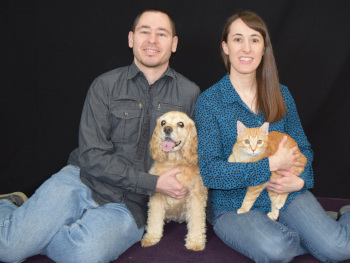
Steve has a Master's of Divinity and has served as an associate pastor for about 7 years. Steve is passionate about passing on his devotion and does so in a variety of ways. Check out his Patreon or the About page to find out how you can help support his efforts.
Categories
-

Sunday School Lessons
How to build your children’s ministry with free resources for your children’s ministry or family time. Includes children’s Sunday School lessons and children’s sermons on the entire Bible!
Recent Articles
-

After Christmas Children's Sunday School Lessons
3 complete children's Sunday School lessons on Simeon and Anna, the visit of the Wise Men, and the boy Jesus staying behind at the Temple
-

Advent and Christmas Children's Sunday School Lessons
4 complete children's Sunday School lessons on John the Baptist, Gabriel appearing to Mary, Joseph, and Jesus' birth
-

Children's Sermons about the Ten Commandments
11 object lessons for children's sermons covering why God gives us rules and each of the Ten Commandments
-

Children's Sermons about the Exodus
10 object lessons for children's sermons covering the major events of Exodus through Joshua
-

The Ten Commandments Children's Sunday School Lessons part 2
6 complete children's Sunday School lessons on the last 5 of the Ten Commandments and following the two greatest commandments
-

The Ten Commandments Children's Sunday School Lessons Part 1
4 complete children's Sunday School lessons on why God gives us rules and the first 5 of the Ten Commandments
